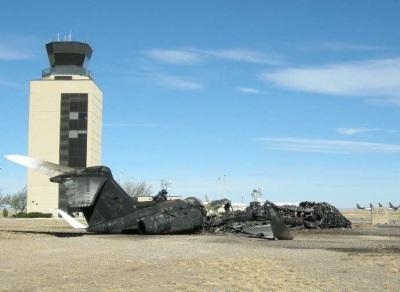Fri, Jan 04, 2013
Bulletin Stems From NTSB G650 Accident Report
The FAA has issued a Special Airworthiness Information Bulletin (SAIB) to advise manufacturers of airplanes certified under parts 23 and 25 of the Federal Aviation Regulations (14 CFR parts 23 and 25) to consider the possibility that the airplane’s maximum lift coefficient in ground effect may be lower than its maximum lift coefficient in free air.

The bulletin stems from the NTSB's accident report following the crash of a Gulfstream G650 test aircraft in Roswell, NM. In that report, the Board said that the probable cause of the accident was "an aerodynamic stall and subsequent uncommanded roll during an OEI takeoff flight test, which were the result of (1) Gulfstream's failure to properly develop and validate takeoff speeds for the flight tests and recognize and correct the V2 error during previous G650 flight tests, (2) the G650 flight test team's persistent and increasingly aggressive attempts to achieve V2 speeds that were erroneously low, and (3) Gulfstream's inadequate investigation of previous G650 uncommanded roll events, which indicated that the company's estimated stall AOA while the airplane was in ground effect was too high. Contributing to the accident was Gulfstream's failure to effectively manage the G650 flight test program by pursuing an aggressive program schedule without ensuring that the roles and responsibilities of team
members had been appropriately defined and implemented, engineering processes had received sufficient technical planning and oversight, potential hazards had been fully identified, and appropriate risk controls had been implemented and were functioning as intended."
On November 28, 2012, the NTSB addressed Safety Recommendation A-12-54 to the FAA. The recommendation states that the agency should:
Inform domestic and foreign manufacturers of airplanes that are certified under 14 Code of Federal Regulations Parts 23 and 25 about the circumstances of this accident and advise them to consider, when estimating an airplane's stall angle of attack in ground effect, the possibility that the airplane's maximum lift coefficient in ground effect could be lower than its maximum lift coefficient in free air. (A-12-54)
The NTSB has posted the following documents on its Docket Management System. These documents include detailed technical discussions of the aerodynamic phenomenon described in Safety Recommendation A-12-54:
- February 17, 2012: The Aircraft Performance Study provides a detailed analysis of the aerodynamic properties and assumptions leading to this recommendation.
- July 19, 2012: Minor corrections to the Aircraft Performance Study are provided in Errata #1.
- March 29, 2012: Additional detailed technical information is in the Aircraft Performance Study Addendum #1.
- July 19, 2012: Errata #1 to Addendum #1 identifies changes to a Gulfstream-provided document that was attached to Addendum #1.
The FAA recommends that manufacturers of airplanes certificated under 14 CFR parts 23 and 25 refer to the detailed performance analysis provided in the documents identified above.
(NTSB photograph)
More News
Airbus Racer Demonstrator Makes Inaugural Flight Airbus Helicopters' ambitious Racer demonstrator has achieved its inaugural flight as part of the Clean Sky 2 initiative, a corners>[...]
A little Bit Quieter, Said Testers, But in the End it's Still a DA40 Diamond Aircraft recently completed a little pilot project with Lufthansa Aviation Training, putting a pair of >[...]
Line Up And Wait (LUAW) Used by ATC to inform a pilot to taxi onto the departure runway to line up and wait. It is not authorization for takeoff. It is used when takeoff clearance >[...]
Contributing To The Accident Was The Pilot’s Use Of Methamphetamine... Analysis: The pilot departed on a local flight to perform low-altitude maneuvers in a nearby desert val>[...]
From 2015 (YouTube Version): Overcoming Obstacles To Achieve Their Dreams… At EAA AirVenture 2015, FedEx arrived with one of their Airbus freight-hauling aircraft and placed>[...]
 Airbus Racer Helicopter Demonstrator First Flight Part of Clean Sky 2 Initiative
Airbus Racer Helicopter Demonstrator First Flight Part of Clean Sky 2 Initiative Diamond's Electric DA40 Finds Fans at Dübendorf
Diamond's Electric DA40 Finds Fans at Dübendorf ANN's Daily Aero-Term (04.23.24): Line Up And Wait (LUAW)
ANN's Daily Aero-Term (04.23.24): Line Up And Wait (LUAW) NTSB Final Report: Extra Flugzeugbau GMBH EA300/L
NTSB Final Report: Extra Flugzeugbau GMBH EA300/L Classic Aero-TV: 'Never Give Up' - Advice From Two of FedEx's Female Captains
Classic Aero-TV: 'Never Give Up' - Advice From Two of FedEx's Female Captains



